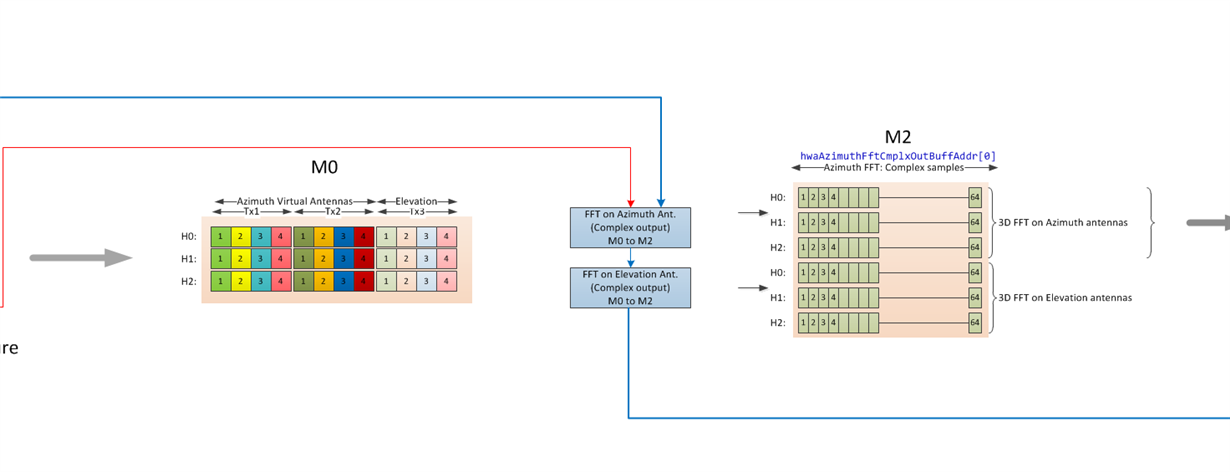Hello,
I have some questions regarding raw data collection on DCA1000EVM and angle estimation algorithm.
1) DCA1000EVM can collect raw data in complex format. How does the device collect data in complex format? As far as I know the antenna can only sense signal magnitude or intensity, how does it get signal phase information?
2) In angle FFT algorithm, if I use 2 Tx and 4 Rx, 8 virtual antennas in total, is it true that I can only get 8 possible angle values based on angle-FFT? From the visualizer I can see that there are far more than 8 possible angle values. Can I have more explanation on the angle-FFT algorithm? And why don't we just solve a equation set of 8 virtual antennas to estimate omega and use omega to calculate angle?
3) Why does angle FFT take the output of 2D FFT? I can understand that the phase change of 1D FFT peaks could be used to estimate small distance change to the object. I would have no doubts if angle-FFT takes the output of range FFT. Why does angle FFT take 2D FFT outputs? Is there any physical insights behind 2D FFT result?
Thank you very much!
Best Regards,
PJ


